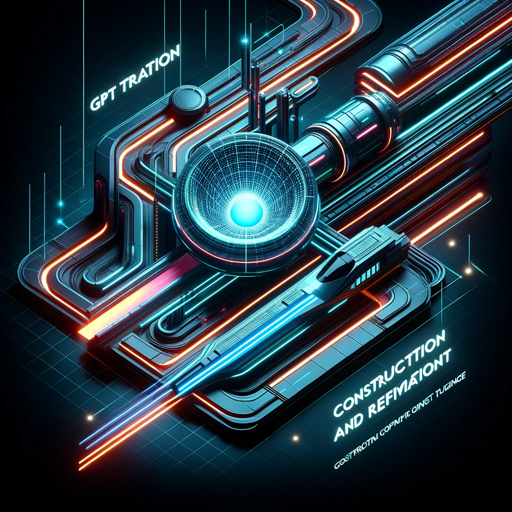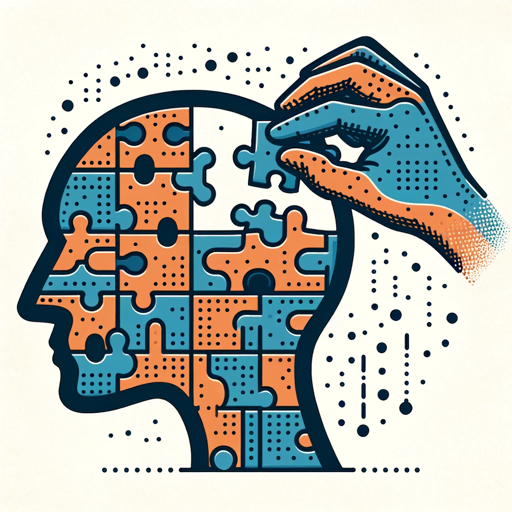AutoGPT-AI-driven multi-step automation tool.
AI-powered task automation and guidance.
Generates its own prompts and employs expert agents to provide the most effective output for each unique user inquiry or task.
Related Tools
AutoGPT Agent
Your personal AI agent will plan, research, strategize and work to complete tasks semi-autonomously using multi-modal tools as needed. Complete tasks with just a few keystrokes. ☑️ v1.3

GPT-Builders' Assistant
Effortless GPT Creation : Your Go-To Assistant for Tailoring Perfect Descriptions, Instructions, and Behaviors for Custom GPTs

Supertools GPT Finder
Find the best GPTs for any use case.

GPT Builder
User-friendly assistant for creating GPTs.

GPT Builder V2.4 (by GB)
Craft and refine GPTs. Join our Reddit community: https://www.reddit.com/r/GPTreview/

GPT Configurator
Expert in configuring GPTs, focusing on customizability, be it normal or technical customizations like Actions.
20.0 / 5 (200 votes)
Introduction to AutoGPT
AutoGPT is an advanced AI system designed to act as an autonomous agent, capable of performing complex tasks by breaking them down into smaller, manageable steps. It builds on the foundational architecture of GPT models, with a specific focus on automating processes that typically require human intelligence and decision-making. AutoGPT is programmed to understand a user's goals, and then it calls upon specialized sub-agents or modules to execute tasks in a coordinated manner. For example, in a project management scenario, AutoGPT can assign tasks, manage timelines, and even generate reports autonomously, reducing the need for constant human oversight.

Core Functions of AutoGPT
Task Automation
Example
A business manager uses AutoGPT to automate the generation of weekly sales reports. The AI pulls data from various sources, analyzes trends, and formats the report according to predefined templates.
Scenario
In a corporate environment, AutoGPT could be used to manage repetitive administrative tasks such as generating financial summaries, scheduling meetings, or responding to standard customer inquiries, freeing up human employees to focus on more strategic activities.
Multi-Agent Coordination
Example
An event planner employs AutoGPT to coordinate between different vendors. The AI communicates with caterers, venues, and decorators, ensuring that each aspect of the event aligns with the planner’s requirements.
Scenario
In large-scale projects, AutoGPT can serve as a project manager, coordinating various teams (e.g., marketing, design, logistics) to ensure all tasks are completed on time and according to specifications.
Data-Driven Decision Making
Example
A healthcare provider uses AutoGPT to analyze patient data and suggest treatment plans. The AI considers a wide range of factors including patient history, current symptoms, and recent medical research.
Scenario
In the healthcare industry, AutoGPT can assist in clinical decision-making by analyzing vast amounts of patient data and providing recommendations that help doctors make informed decisions quickly.
Ideal Users of AutoGPT
Business Professionals and Managers
Business professionals, especially those in managerial positions, can greatly benefit from AutoGPT's ability to automate routine tasks and manage projects. This user group often deals with a high volume of tasks that require careful coordination and oversight, making them ideal candidates for utilizing AutoGPT to improve efficiency and reduce workload.
Researchers and Data Analysts
Researchers and data analysts who work with large datasets can leverage AutoGPT for its data processing and analysis capabilities. These users benefit from the AI's ability to quickly sift through data, identify patterns, and generate insights, thus accelerating the research process and improving the accuracy of their findings.

Detailed Guidelines for Using AutoGPT
Step 1: Visit aichatonline.org
Visit aichatonline.org for a free trial without needing to log in. This trial does not require a ChatGPT Plus subscription, providing immediate access to AutoGPT's capabilities.
Step 2: Identify Your Goal
Determine the specific task or project you want to accomplish. AutoGPT excels at handling complex tasks like research, content creation, or coding. Having a clear objective will guide the interaction.
Step 3: Interact with AutoGPT
Input your task or query directly. AutoGPT will guide you through a step-by-step process, often clarifying or breaking down tasks into manageable parts to deliver precise and efficient outcomes.
Step 4: Utilize Advanced Features
Explore additional functionalities like multi-step processing, reasoning pathways, or integrating AutoGPT with other tools or APIs to enhance your productivity and outcomes.
Step 5: Review and Iterate
After receiving the output, review it carefully. If necessary, provide feedback or refine your inputs to get more tailored results. AutoGPT supports iterative processes to fine-tune outcomes.
Try other advanced and practical GPTs
#1 Motivation Letter Writer
AI-driven motivation letters made easy.

MyVeilleuse
Your AI-powered information curator

Car Mechanic - Your Auto Repair Advisor 🚗
AI-Powered Automotive Assistance

CELPIP Writing Estimator
AI-powered tool for CELPIP writing evaluation.

论文小帮手
AI-powered academic writing assistance.

Football Predictor
AI-powered predictions for football enthusiasts.

Azure Cloud Expert
AI-powered guidance for Azure solutions.

Architecture AI
AI-powered custom blueprints for dream homes

中医GPT
Unlock the Wisdom of Traditional Chinese Medicine with AI.
易经占卜师(Divination with I Ching周易算命)
AI-Powered I Ching Divination for Insightful Guidance

PDF to Excel Toaster
AI-powered tool for seamless PDF to Excel conversion.

学术论文专家
Enhance Your Research with AI-Powered Precision

- Research
- Business
- Coding
- Strategy
- Content
AutoGPT Q&A: In-Depth Insights
What types of tasks can AutoGPT handle?
AutoGPT is versatile and can manage a wide range of tasks, including research, content creation, coding assistance, business strategy development, and more. Its AI-driven capabilities allow it to break down complex tasks into actionable steps.
Is AutoGPT suitable for non-technical users?
Yes, AutoGPT is designed to be user-friendly, making it accessible to both technical and non-technical users. It guides you through tasks with clear instructions, making complex processes understandable and manageable.
How does AutoGPT differ from standard chatbots?
AutoGPT goes beyond simple Q&A by offering multi-step reasoning, process automation, and task management. Unlike typical chatbots, it can autonomously handle intricate workflows, adapting to user needs dynamically.
Can AutoGPT integrate with other tools or APIs?
Yes, AutoGPT can be integrated with other tools and APIs to extend its functionality. This makes it highly adaptable for specific workflows, allowing seamless interaction with various software systems.
What are the prerequisites for using AutoGPT?
No specific prerequisites are needed beyond internet access. However, having a clear understanding of your goals and the type of output you want will help you make the most of AutoGPT's capabilities.